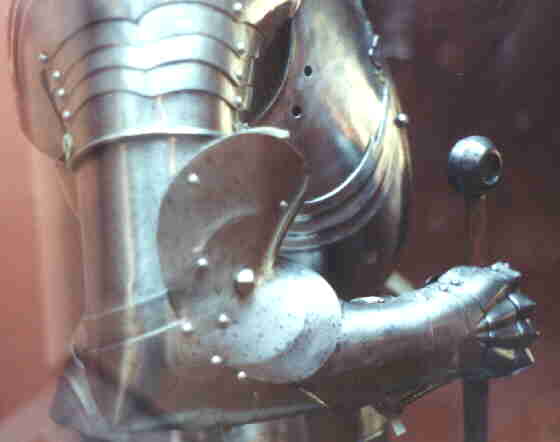I have recently run into a road block with the construction of my pauldrons. In my research I have learned that the lames of the pauldrons were attached by sliding rivets at the back and leather straps on the side and front portions. The top lame overlaps the one below all the way down. I have pictures of the insides of historical examples which show the sliding rivets and the side leather strap which attach by blind rivets but the pictures don’t show how the front portions of the lames were connected. What confuses me is the fact that on the outside front, there is a row of rivets down the lames similar to the back side of the pauldron. It appears to me that these rivets couldn’t possible be attached to the respective lames below because it would inhibit movement of the arm.
My questions:
Are the lames for the front side connected the same way with blind rivets as the side strap therefore making the front external row of rivets just for aesthetical purposes?
Could you please help me with a verbal description and/or pictures of how the lames were attached? Attached is a similar example of the pauldrons I am constructing. Notice the row of rivets down the front and back. How would the lames move as shown in the picture?
